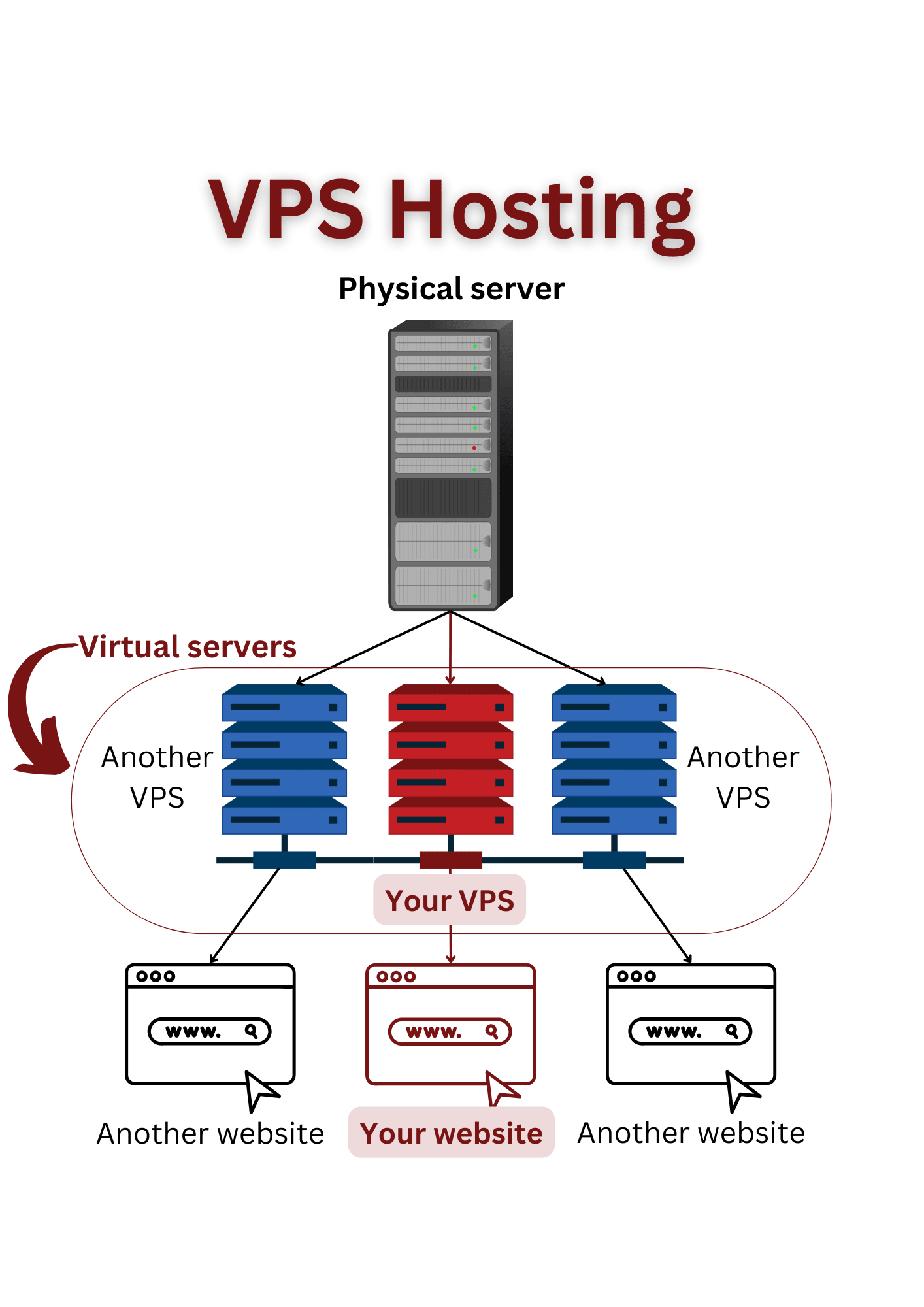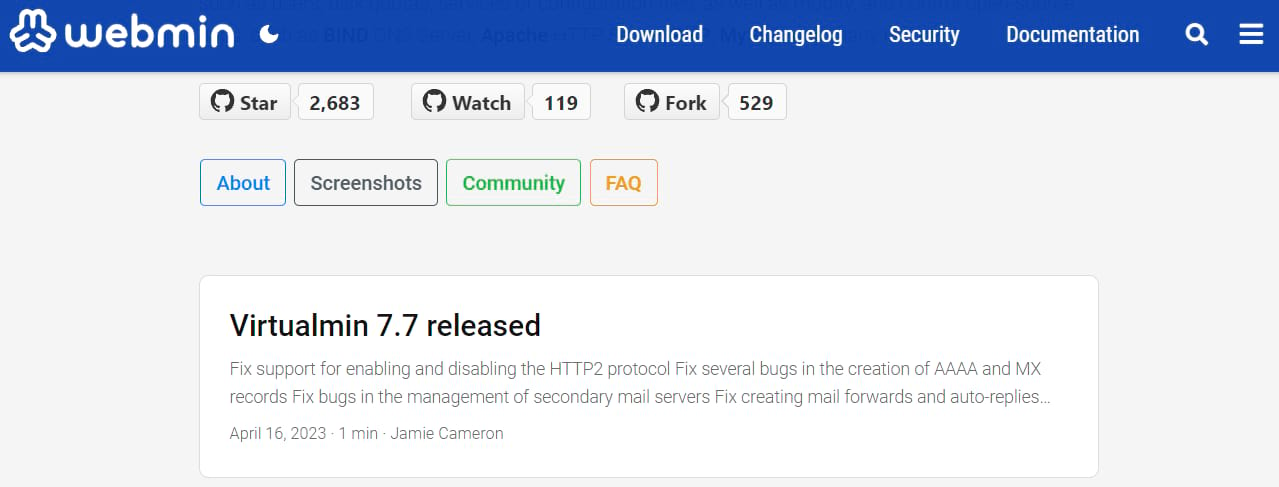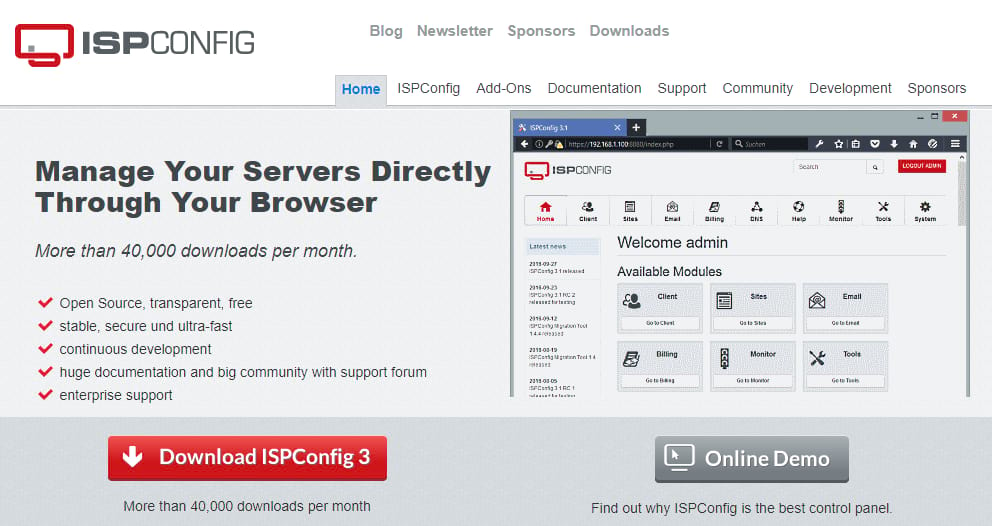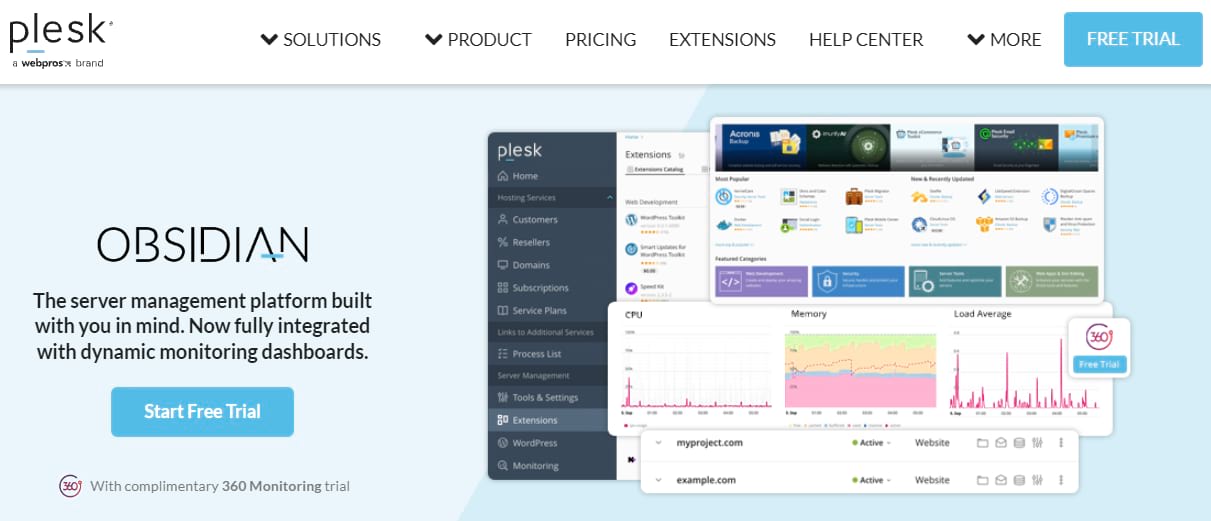5 Simple VPS Management Tools You Need
individuals looking for scalable and flexible hosting solutions. They offer numerous benefits, such as increased control, scalability, and cost-efficiency. However, managing a VPS can sometimes feel like navigating a complex labyrinth of commands and configurations, requiring a lot of time and technical knowledge.
Fortunately, there are several, simple yet powerful VPS management tools available that can streamline your server administration process and make your experience much easier. With the right tools at your disposal, you can optimize your VPS management process, automate repetitive tasks, and monitor your resources and performance.
In this article, we will explore five simple VPS management tools that can help you effectively manage your VPS. We will cover their features, benefits, and installation tips to help you implement the right VPS management tool for your needs, whether you're a seasoned developer or just starting your hosting endeavor.
Let's jump right in!
Understanding VPS Management and Monitoring
A VPS is a virtualized hosting environment that mimics the characteristics of a dedicated server within a shared hosting infrastructure.
It employs virtualization technology to divide a physical server into multiple, independent virtual servers, each with its own operating system, resources, and dedicated storage. This unique architecture will allow you to have more control and flexibility over your hosting environment, compared to traditional shared hosting.

In order to ensure the optimal performance and security of your virtual hosting environment, it’s crucial to have a comprehensive understanding of VPS management and monitoring.
VPS management encompasses a range of tasks and responsibilities aimed at maintaining and optimizing the performance of your virtual server. From initial setup to ongoing maintenance, effective management and monitoring practices establish a seamless hosting experience, enabling scalability, resolving issues swiftly, and optimizing costs.
Why Server Monitoring Matters
Server monitoring is essential for maintaining the optimal performance, security, and reliability of your VPS environments. Inadequate server monitoring can lead to serious consequences, such as data breaches, loss of revenue, and a negative user experience.
By continuously monitoring key metrics, you can proactively address performance issues, improve server uptime, enhance security measures, optimize resource utilization, and plan for scalability.
Here is an in-depth look at the benefits of VPS monitoring:
- Early detection of performance issues – Constantly monitoring key metrics such as CPU usage, memory consumption, disk space, and network traffic helps you identify potential bottlenecks or resource constraints as soon as possible to ensure a smooth user experience for yourself and your site users.
- Improved server uptime – Downtime can be disastrous for any online business because it potentially leads to lost revenue, decreased customer trust, and damaged reputation. Server monitoring helps prevent unexpected downtime by constantly monitoring server health and sending alerts in case of anomalies. Proactively identifying potential hardware failures, software glitches, or network connectivity problems will enable you to take necessary actions to minimize downtime and ensure maximum server uptime.
- Enhanced security – Security breaches and cyber-attacks have become more prevalent in recent years, posing significant threats to businesses of all sizes, with 7% of targeted businesses suffering serious damage. Monitoring software can detect unauthorized access attempts, abnormal traffic patterns, or potential malware infections, encouraging you to take immediate steps to mitigate risks, fortify your defenses, and safeguard critical data.
- Capacity planning and scalability – Monitoring helps in capacity planning and scalability by tracking resource utilization trends over time, which will help you forecast future resource requirements accurately. This will also prevent overprovisioning and optimize cost efficiency in terms of server resources.
Types of Server Monitoring
To make an informed decision about the monitoring solution that best suits your needs, let’s explore the various types of VPS monitoring along with their benefits and use cases:
- Network and resource monitoring – This type of monitoring focuses on tracking key server performance metrics, such as CPU usage, memory usage, and disk space. Tools like Nagios, Zabbix, and Prometheus are popular choices for observing performance, offering real-time monitoring, alerting, and visualization of various metrics.
- Security monitoring – Security monitoring involves keeping an eye on your VPS for potential security breaches, malware infections, and unauthorized access attempts. Security monitoring tools, such as Netdata and OpenNMS, scan your VPS for vulnerabilities, track system logs for suspicious activities, and analyze network traffic for potential threats so you can proactively detect and mitigate security risks and safeguard your VPS.
- Application monitoring – Application monitoring delves deeper into the health and performance of the software running on your VPS. App monitoring tools like SolarWinds Server & Application Manager and AppDynamics will help you track critical application metrics such as response time, transaction volume, error rates, and database performance, which will notify you about the behavior of your applications or websites so that you can identify potential bottlenecks, bugs, or vulnerabilities.
- Uptime monitoring – Uptime monitoring focuses on ensuring that your VPS remains accessible to users at all times. Uptime monitoring tools continuously monitor your server's availability by periodically sending requests to the server and alerting you instantly if it becomes unresponsive. Tools like Paessler PRTG and Uptime.com often offer historical uptime reports, allowing you to assess your server's reliability over time.
Best Practices for VPS Management and Maintenance
Whether you're a seasoned sysadmin or a beginner, it's crucial to follow these best practices for effective VPS management and maintenance to guarantee optimal performance, security, and uptime:
- Ensure regular software updates – Regularly conduct operating system updates, security patches, and bug fixes so you can benefit from enhanced features, bug resolutions, and the latest security measures.
- Implement secure access with SSH keys – Instead of relying solely on passwords, use SSH keys for authentication. SSH keys provide a higher level of security by encrypting communication between your local machine and your VPS.
- Fine-tune firewall configuration – Configure a firewall that restricts incoming and outgoing connections based on specific protocols, ports, and IP addresses. Also, regularly review your firewall rules to ensure they align with your security requirements.
- Regularly back up your data – Protect your data and prevent any potential loss or corruption by regularly backing up your VPS. Consider implementing an automated backup solution that captures your entire system or critical files and databases. Store backups in a secure, off-site location or utilize cloud storage services. Additionally, performing periodic restore tests is recommended to verify the integrity of your backups.
- Use monitoring and logging – Employ monitoring and logging tools to gain insights into your virtual server’s performance, resource utilization, and potential issues. Monitor CPU, memory, disk space, network traffic, and server uptime.
- Harden security measures – Enhance the security of your VPS by implementing additional measures like disabling unnecessary services and closing unused ports to minimize attack vectors. Moreover, it’s best to implement intrusion detection systems (IDS) and intrusion prevention systems (IPS) to detect and prevent unauthorized access attempts. Also, utilize strong, unique passwords for all user accounts, and consider implementing two-factor authentication (2FA) for an added layer of protection.
A well-managed VPS empowers you to focus on your online goals and deliver an exceptional user experience. Remember, VPS management is an ongoing process that requires vigilance and adaptability. By staying up to date with emerging technologies, security threats, and industry best practices, you can stay ahead of the curve and ensure your VPS runs smoothly, providing a reliable platform for your online presence.
Alternatively, if you'd prefer to avoid the hassle of managing and monitoring your VPS yourself, consider opting for a dedicated VPS solution like Liquid Web, which offers real-time monitoring, exceptional customer support, and a reliable hosting experience tailored to your specific needs.
Free vs Paid VPS Management Tools
With a rising demand for VPS hosting, various VPS management tools have come into existence to assist you in streamlining your server operations. So the question arises: should you opt for a free VPS management tool or invest in a paid one?
Let’s explore the advantages and limitations of both options:
| Feature | Free | Paid |
|---|---|---|
| Cost | No upfront cost. | Subscription or one-time fee. |
| Ease of use | May require technical expertise (CLI or SSH). | Often includes simple, straightforward user interfaces (UIs) and control panels. |
| Scalability | Limited features, may need to upgrade or switch tools as needs grow. | More robust features designed for growth and scalability. |
| Performance | Basic performance monitoring and management. | Advanced performance optimization, monitoring, and management. |
| Support options | Limited support, usually community-driven. | Dedicated support, often 24/7, from the tool provider. |
| Integration | May have limited integration options. | Better integration with other systems and tools. |
| Operating system | Varies, but most support Linux and some support Windows. | Support for both Linux and Windows VPS hosting. |
| Application support | May support popular PHP apps like WordPress but with limited features. | Comprehensive support for PHP apps, including WordPress and other popular platforms. |
Ultimately, you need to consider your budget, requirements, and technical expertise when choosing your VPS management tool. While free tools might save you money in the short term, investing in a paid solution can provide long-term benefits, ensuring the smooth operation and security of your VPS environment.
Choose a tool that strikes a balance between functionality, support, and cost to effectively manage your VPS and drive your business forward.
Top 5 Simple VPS Management Tools
One of the most important VPS tools you need to use is a control panel. Control panels provide a centralized interface that will allow you to effortlessly manage various aspects of your hosting environment. These tools offer a range of features, benefits, and use cases to cater to different user preferences and requirements.
Here are five popular control panel solutions, compared on the basis of their features, ease of use, flexibility, and overall performance. (Note: any pricing information listed below is accurate as of the publication date of this article but is subject to change.)

Webmin is a free, open-source control panel that’s particularly suitable for those who prefer a flexible and customizable solution for managing their hosting environment.
Webmin offers a comprehensive set of features, including:
- System configuration management.
- User and group administration.
- File and package management.
- Network services configuration.
- Multiple Linux distributions support and allow for the installation of various modules to extend the functionality.
Additionally, Webmin's flexibility and extensibility make it a valuable tool for you or your system administrators because it offers fine-grained control over your hosting environment. It provides a user-friendly interface for managing essential aspects of the system and services, making it an ideal choice for you if you prefer a highly customizable control panel.

cPanel is a paid tool that is one of the most widely used control panels in the hosting industry. It caters to website owners, developers, and hosting providers who seek a robust and feature-rich solution with a user-friendly interface.
cPanel offers an extensive range of features that cover various aspects of website and server management. It includes domain management, email account configuration, database administration, security settings, backup and restore functionality, and more. cPanel also provides a marketplace with numerous add-ons and integrations to expand its capabilities.
The popularity of cPanel stems from its wide adoption among hosting providers, ensuring compatibility and easy migration between different hosting environments. Not to mention, cPanel's performance and stability are highly regarded, enabling smooth operations even under high traffic conditions.
It has a few pricing and licensing plans, starting at $15.99 USD per month.

ISPConfig is a free, open-source control panel designed for managing single and multi-server hosting environments. It can be ideal for small to medium-sized businesses or individuals seeking a simple and efficient control panel for their hosting needs.
ISPConfig offers essential features for managing websites, email accounts, DNS settings, FTP accounts, and more. It will allow you to create and manage multiple servers within a single interface, making it suitable for centralized management of multiple hosting resources.
Its strength lies in its simplicity and ease of use. It provides straightforward management functionalities for users with basic hosting requirements. Furthermore, the open-source nature of ISPConfig allows for customization and adaptation to specific needs, making it an attractive option for those pursuing a lightweight and flexible control panel.

Built on top of Webmin, VirtualMin brings a comprehensive suite of tools specifically tailored for managing virtual servers. It caters to hosting providers, developers, and advanced users who require efficient management of multiple domains and virtual resources on Linux and BSD operating systems.
VirtualMin offers a suite of tools tailored for virtual server management to allow the creation and management of virtual hosts, domains, users, email accounts, and databases. It can also be easily integrated with popular virtualization technologies such as OpenVZ and Linux KVM to provide seamless virtual server management capabilities. This flexibility, scalability, and integration with virtualization technologies enable efficient resource allocation and streamlined management of virtual resources.
You can get this tool for free, or you can go for the paid version, starting at $7.50 USD per month, if you require additional capabilities.

Plesk is a feature-rich and user-friendly control panel that offers an all-in-one solution for managing websites, applications, and servers. It caters to a broad range of users, from beginners to experienced administrators.
It offers a wealth of features, including website management, email configuration, security settings, database administration, application deployment, and more. Also, it supports multiple operating systems and provides a wide selection of extensions to expand its capabilities further. Plesk's performance capabilities ensure efficient resource utilization, optimizing website delivery and enhancing the overall hosting experience.
It’s a paid tool, and it starts at $13.50 USD per month.
While choosing a control panel, assess your needs and select the one that best aligns with your specific hosting requirements to ensure a seamless and efficient management experience.
Experience Unrivaled VPS Management With Liquid Web
As the reliance on virtual private servers (VPS) continues to grow, having the right management tools in place becomes paramount. These tools not only streamline administrative tasks but also enhance the overall efficiency and reliability of your VPS.
If you're looking for a reliable VPS solution that offers real-time monitoring and exceptional customer support, consider Liquid Web as your VPS hosting provider.
Liquid Web is committed to delivering reliable and high-performance hosting solutions. With Liquid Web's VPS hosting plans, you can enjoy an impressive 99.999% uptime guarantee, ensuring that your website or application remains accessible to your audience around the clock. Additionally, Liquid Web’s fully managed hosting takes the burden of server management off your shoulders, allowing you to focus on your business growth rather than technical intricacies.
Liquid Web also has a seamless migration process, thanks to a dedicated migration team that handles the entire process for you. This ensures minimal downtime and a smooth transition, allowing you to quickly leverage Liquid Web’s superior VPS management tools.
Last but not least, choosing Liquid Web as your VPS solution will eliminate the need for multiple VPS management tools. Liquid Web’s comprehensive platform encompasses all the essential features you require to maintain optimal server performance, security, and uptime.
Take the first step towards a hassle-free hosting experience and explore Liquid Web's VPS solutions today!
Troubleshooting Common Issues With VPS Management Tools: Frequently Asked Questions
What should I do if I cannot access the control panel of my VPS management tool?
+Why am I receiving error messages or notifications from my VPS management tool?
+How can I fix performance issues with my VPS management tool?
+What should I do if my VPS management tool is not updating or installing new features correctly?
+How can I secure my VPS management tool from potential threats?
+Related Resources

James J. Porter
James is one of the many helpful members of our Support Team. An expert when it comes to translating the difficult technical aspects of website hosting to our clients. As a Level 3 Support Technician, which involves intimate working knowledge of many services that affect a hosting environment, James also works to assist everyone, team members and clients alike, on the best practices to ensure a stress free hosting experience.
Keep up to date with the latest Hosting news.



